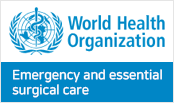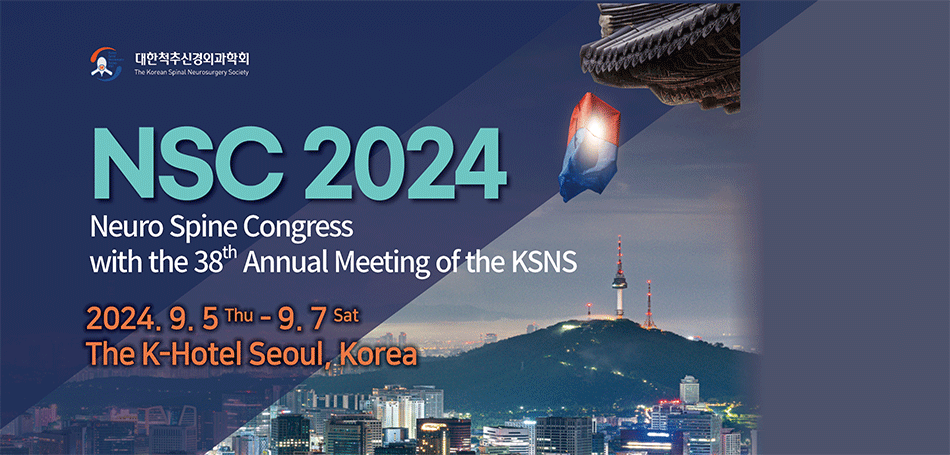- Search
|
|
||
Abstract
Objective
It remains unclear whether cervical sagittal deformity (CSD) should be defined by radiographic parameters alone versus both clinical and radiographic factors, and whether radiographic malalignment by itself warrants a CSD corrective surgery in patients who present primarily with neurologic symptoms.
Methods
We administered a survey to a group of expert surgeons to evaluate whether radiographic parameters alone were sufficient to diagnose CSD, and in which scenarios surgeons recommend a CSD realignment procedure versus addressing the neurologic symptoms alone.
Results
No single radiographic criteria reached a 50% threshold as being sufficient to establish the diagnosis of CSD. When asymptomatic radiographic malalignment was present, a sagittal deformity correction was more likely to be recommended in patients with myelopathy versus those with radiculopathy alone. The majority of surgeons recommended deformity correction when symptoms of cervical deformity were present in addition to radiographic malalignment (85% with deformity symptoms and radiculopathy, 93% with deformity symptoms and myelopathy).
Conclusion
There is no consensus on which radiographic and/or clinical criteria are necessary to define the presence of CSD. We recommend that symptoms of cervical deformity, in addition to radiographic parameters, be considered when deciding whether to perform deformity correction in patients who present primarily with myelopathy or radiculopathy.
Cervical sagittal deformity (CSD) is an extremely disabling condition that can have a myriad of etiologies including congenital, degenerative disease, posttraumatic, iatrogenic, and inflammatory, among others [1]. CSD can cause symptoms from the deformity itself, such as difficulty holding one’s head upright with an inability to maintain horizontal gaze, neck pain, and difficulty swallowing in severe cases. In addition to the symptoms related to the spinal malalignment, CSD can often also be associated with symptoms of radiculopathy and/or myelopathy from cervical nerve root or spinal cord compression. Indeed, CSD itself may be a cause of cervical myelopathy in certain situations from draping of the spinal cord over anterior pathology causing an increase in longitudinal spinal cord tension [2,3].
While there are several radiographic parameters commonly cited in the literature as inclusion criteria for entry into studies on CSD [4], the question remains as to whether these parameters are sufficient to warrant a diagnosis of CSD in clinical practice. Many patients present with radiculopathy or myelopathy in the setting of sagittal alignment that is not “perfect,” but do not have a severe chin-on-chest deformity that obviously requires concomitant correction. Indeed, there have been many publications examining the postoperative outcomes of cervical deformity patients utilizing a large multicenter database with the following inclusion criteria: cervical kyphosis C2-C7 Cobb angle > 10°; cervical scoliosis C2–7 coronal Cobb angle > 10°, C2–7 sagittal vertical axis (cSVA) > 4 cm, or chin-brow vertical angle > 25° [5-8]. Despite these radiographic definitions, it remains unclear whether patients who meet those radiographic criteria of cervical deformity actually require concomitant cervical deformity correction when they present primarily with symptoms of myelopathy and/or radiculopathy.
To begin to answer this question, we surveyed an international group of experienced cervical deformity surgeons on several clinical scenarios to determine if there is consensus as to (1) the definition of a cervical sagittal plane deformity in clinical practice, and (2) when a myelopathy/radiculopathy patient with radiologic malalignment merits additional CSD correction with its associated risks, versus when a smaller procedure to only treat the myelopathy and/or radiculopathy is sufficient.
A survey (Supplementary Material) was distributed through REDCap (Project REDCap, Vanderbilt University) to 82 expert cervical spine surgeons (current and past Board Members from the Cervical Spine Research Society [CSRS], CSRS Asia Pacific, and CSRS Europe, as well as those who have published extensively in CSD) with differing experience, training background (neurosurgery vs. orthopaedic surgery), and practice environment (university setting vs. private or hospital employed). The questions, developed by the authors of this study, were designed to determine whether the current published radiographic criteria were sufficient alone to establish a diagnosis of CSD or whether other clinical and physical exam factors were also thought to be necessary in the diagnosis of CSD. We also presented several clinical vignettes to determine which radiographic parameters would require correction in the setting of clinical signs and symptoms such as radiculopathy, myelopathy, axial neck pain, and difficulty holding one’s head upright.
Statistical analyses were performed using the R ver. 4.1.3 (R Foundation for Statistical Computing, Vienna, Austria). Chi-square analyses in Tables 1 and 2 were used to assess whether participants showed a preference for one option over another (i.e., significantly differed from an equal split across options).
We received survey responses from 41 surgeons (33 orthopaedic surgeons, 8 neurosurgeons) with 93% working in an academic environment. 35 surgeons (85%) were from North America, 2 (5%) were from Europe, and 4 (10%) were from Asia. Forty-one percent of surgeons had 6–15 years of experience and 59% had 16+ years of experience (mean, 19.7±9.0 years). Eighty percent of the surgeons devote greater than 50% of their surgical practice to treating patients with cervical spine disorders. Ninety-three percent of the surgeons perform a realignment procedure for CSD at least once every 3 months.
The survey results demonstrate that CSD remains difficult to define, as no single radiographic criteria (each of which alone has commonly been used as an inclusion criterion for entry into studies on cervical deformity surgery) reached even a 50% threshold as being sufficient to establish a diagnosis of CSD in clinical practice (Table 3). Even when all 3 of these radiographic criteria were combined with patient-reported symptoms of difficulty holding one’s head upright, 68% of surgeons still felt this combination was insufficient to establish the diagnosis of CSD.
An extensive sagittal deformity correction procedure beyond that needed to just treat the neurologic disorder was much more likely to be recommended in patients with myelopathy and asymptomatic radiographic malalignment (51%; Table 1) versus those with radiculopathy and asymptomatic radiographic malalignment (10%; Table 2). However, despite that, only 51% recommended extensive deformity correction even in those with myelopathy and asymptomatic radiologic malalignment. The presence of neck pain did not substantially change the recommendation for either radiculopathy (17%) or myelopathy (54%) patients.
When examining proportions, surgeons were more likely to recommend extensive deformity correction in both radiculopathy and myelopathy patients when they had concomitant symptoms of deformity (i.e., neck pain associated with difficulty holding one’s head upright) along with radiologic malalignment (radiculopathy 85%, myelopathy 93%).
Our study shows that there is poor consensus amongst a group of worldwide cervical spine surgery experts on the definition of CSD. Similarly, the indications for a sagittal plane corrective procedure versus a procedure designed to simply address the myelopathy and/or radiculopathy remains a topic of debate. Although, degenerative cervical disorders causing myelopathy and radiculopathy are common, symptomatic CSD requiring corrective surgery is relatively more rare, especially when compared to thoracolumbar spinal deformity [1,9]. The question of when cervical sagittal realignment procedures are needed is important because CSD procedures are typically more extensive than procedures for degenerative cervical pathology, require fusion of a greater number of motion segments, more often involve combined anterior and posterior approaches, more commonly require osteotomies, and have a higher rate of complications [10-15]. On the other hand, while operations to simply treat radiculopathy and/or myelopathy are often less invasive than CSD procedures, they may potentially have the risk of undertreating the problem and not addressing all potential pain generators or dynamic neurologic compression. In this study, we found that no single radiographic or clinical criteria by itself was sufficient to establish a diagnosis of CSD. In those with asymptomatic radiographic malalignment, we found that expert surgeons are much more likely to recommend a sagittal realignment procedure when patients have myelopathy compared to radiculopathy. However, even in that setting, deformity correction was recommended by only 51% of surgeons. Finally, surgeons were much more likely to recommend deformity correction surgery in patients with concomitant symptoms of sagittal plane deformity (93% for those with myelopathy, 85% for those with radiculopathy). These results suggest that clinical symptoms of deformity should be strongly considered in clinical decision-making, rather than relying solely on radiographic alignment criteria alone.
Our understanding of CSD is still evolving as we gain more insight into normative cervical and thoracolumbar alignment [16-19]. While it is well known that degenerative cervical conditions have significant negative effects on health-related quality of life (HRQoL), it remains unclear as to what extent CSD itself negatively affects HRQoL. As there are no current widely-adopted specific CSD HRQoL instruments, we do not have a full understanding of the impact of CSD that is independent of the negative effects that myelopathy and radiculopathy have on HRQoL. Further, it has been shown that approximately one-third of the asymptomatic population has a kyphotic alignment of the cervical spine [20,21]. Given this, it is somewhat surprising that we found only 32% of expert surgeons felt that C2–7 kyphosis > 10° was sufficient to establish a diagnosis of CSD. Although cervical kyphosis is frequently present in asymptomatic individuals, sagittal malalignment is very poorly tolerated in the thoracolumbar spine and lumbar kyphosis is less commonly present in normal, asymptomatic patients [22]. It is known, however, that kyphotic cervical alignment in the presence of anterior compressive disease increases longitudinal cord tension and there may be less dorsal migration of the cord with posterior decompression [23,24]. Even with this in mind, not all patients need to achieve the same amount of lordosis after a cervical spine fusion procedure. Passias et al. reported on the relationship between myelopathy, surgical deformity correction, and patient-reported outcomes (PROs) and found no relationship between PRO improvement and cervicalspecific sagittal alignment measures [25]. Other studies have suggested an association between postoperative cervical lordosis minus T1 slope and worsened disability after cervical deformity correction [26]. Given these somewhat disparate results, it is safe to say that we do not yet fully understand which patients require lordotic alignment after cervical reconstruction. Rather than the amount of overall cervical lordosis, the final C2 tilt or C4 tilt may ultimately prove to be more important with regards to restoring normal alignment, but this will need further prospective validation [20,27]. In this study, we sought to specifically focus on cervical radiographic parameters that have been widely published in literature to date, but certainly understand the value in discussing additional parameters as more evidence is obtained over time.
In addition to cervical lordosis, C2–7 SVA < 4 cm has been reported as an important measure of sagittal alignment. However, it is not clear what the target C2–7 SVA should be for all patients undergoing cervical spine surgery. Normal C2–7 SVA has been reported to be 16.8±11.2 mm [28]. Previous studies have reported that C2–7 SVA > 4 cm is associated with worsened PROs after multilevel posterior cervical deformity surgery [29], and this criterion is part of the comprehensive cervical spine deformity classification system which was proposed by Ames et al. [19] Although these studies certainly suggest that a C2–7 SVA of < 4 cm may be beneficial to achieve in those undergoing cervical deformity correction, they should not necessarily be interpreted as meaning that all patients with radiculopathy or myelopathy need to have a value < 4 cm to achieve an optimal outcome. By contrast, in a recent study by Karamian et al. [30] of patients undergoing 1–3 level anterior cervical discectomy and fusion, those with a preoperative C2–7 SVA of > 4 cm actually had greater improvement in Neck Disability Index scores postoperatively versus those with a C2–7 SVA < 4 cm, even though the SVA values remained > 4 cm in the former group and < 4 cm in the latter. In other words, in patients with primarily radiculopathy or myelopathy, C2–7 SVA may not necessarily be a major driver of outcomes. Further, given that C2–7 SVA is dynamic and is affected not only by the intrinsic cervical alignment but also by other postural factors (thoracolumbar spinal alignment, lower extremity compensation, etc.), it should not be solely relied upon when planning a cervical sagittal corrective procedure. Accordingly, we found that only 39% of experts felt that C2–7 SVA was sufficient to establish a diagnosis of CSD, although 93% of surgeons felt it important to normalize C2–7 SVA along with the other radiographic parameters when cervical deformity correction is performed. More work will be needed to understand which radiographic measures are most important to normalize to maximize postoperative PROs and return to activities with cervical deformity correction.
Given the high morbidity of cervical deformity surgery, it is certainly important to carefully select patients who truly require aggressive sagittal correction versus those who will benefit from a procedure to simply address the myelopathy and radiculopathy. Here we found that 90% of surgeons in cases of radiculopathy, and 49% of surgeons in cases of myelopathy would not perform an aggressive sagittal realignment procedure beyond what is necessary to treat the neurological issue to correct an asymptomatic radiographic abnormality. If patients have truly symptomatic deformity with symptoms of neck pain associated with difficulty holding one’s head upright and with horizontal gaze, along with a clear radiographic deformity, then a sagittal realignment procedure is indicated (Fig. 1E–F). However, if patients simply have radiographic abnormalities (e.g., cervical kyphosis, C2–7 SVA > 4 cm, etc.) without a clinically visible or symptomatic deformity (Fig. 1A–D), then in our opinion, and based on these results, a more limited procedure to treat the myelopathy/radiculopathy may be recommended.
There are several limitations associated with this study. The percentage of total respondents was only 50% of those invited. However, this is consistent with previous response rates for other published spine surveys [31-34]. Also, only 20% of the respondents had a neurosurgical training background, and only 15% were from outside North America. Additionally, former/current CSRS leadership and those who have published extensively in CSD-related topics may not be representative of all cervical spine surgeons. These factors could have led to bias in the results. Despite this, much of the current literature and education related to CSD were developed and provided by those invited for this survey. Lastly, the case descriptions we provided were standardized based on symptom descriptions, and did not include the actual images nor clinical photos for evaluation. We selected this approach in order to increase the generalizability of findings, rather than focusing on the specifics associated with a particular case. Nevertheless, we do recognize that looking at images may certainly impact the decision-making process. Despite these limitations, this is the first survey that seeks to understand when a smaller procedure to treat only the radiculopathy and myelopathy may be sufficient without specifically attempting to correct the radiographic malalignment, and when a more extensive sagittal realignment procedure may be warranted.
Despite numerous published studies defining CSD by radiographic criteria alone, there is no consensus amongst a diverse group of expert cervical spine surgeons as to what radiographic criteria are necessary to define the presence of cervical deformity in clinical practice. Expert surgeons are more likely to perform CSD realignment procedures in patients with myelopathy versus those with radiculopathy alone, and were also more likely to recommend an extensive deformity correction when clinical symptoms of deformity were present along with the radiologic malalignment. Therefore, based on expert opinion, surgeons should not necessarily recommend extensive CSD realignment operations in all patients with radiologic malalignment alone, but may carefully consider doing so when symptoms of deformity are also present.
Limitations of our report include those inherent to survey studies and the limited numbers of spine surgeons from nonacademic medical centers responding to the survey. However, given the responses from both neurosurgeons and orthopaedic spine surgeons and from both very senior and midcareer surgeons, we believe this provides an accurate representation of expert practice patterns regarding the treatment of CSD. More work is necessary to refine the definition of CSD and what patients will ultimately benefit from a sagittal plane realignment procedure.
SUPPLEMENTARY MATERIALS
Supplementary Material: Supplementary Survey Questions can be found via https://doi.org/10.14245/ns.2244924.462.
NOTES
Fig. 1.
Representative patients all with symptoms of radiculopathy and/or myelopathy with radiographic malalignment. (A, B) Patient with cervical radiculopathy with no neck pain, C2–7 SVA > 4 cm, and C2–7 kyphosis > 10°. (C, D) Patient with cervical myelopathy with chronic axial neck pain, C2–7 SVA > 4 cm, C2–7 kyphosis > 10°, but no visual appearance of deformity and no difficulty with horizontal gaze or holding one’s head upright. (E, F) Patient with cervical myelopathy with axial neck pain, difficulty holding his head upright, unable to maintain horizontal gaze, C2–7 SVA > 4 cm, C2–7 kyphosis > 10°.

Table 1.
In a patient with myelopathy and with the clinical signs and symptoms listed below, would you offer the patient a “more extensive” operation than what is needed to adequately treat the myelopathy in order to normalize the sagittal plane radiographic abnormalities (C2–7 SVA >4 cm, C2–7 kyphosis >10°, CBVA >25°)?
| Variable | Yes | No | p-value |
|---|---|---|---|
| Myelopathy alone | 21 (51) | 20 (49) | 0.88 |
| Myelopathy with neck pain | 22 (54) | 19 (46) | 0.64 |
| Myelopathy with neck pain and difficulty holding head upright | 38 (93) | 3 (7) | < 0.001 |
Table 2.
In a patient with radiculopathy and with the clinical signs and symptoms listed below, would you offer the patient a “more extensive” operation than what is needed to adequately treat the radiculopathy in order to normalize the sagittal plane radiographic abnormalities (C2–7 SVA >4 cm, C2–7 kyphosis > 10°, CBVA >25°)?
Table 3.
Is the radiographic criteria or clinical symptom listed below, by themselves, sufficient to establish a diagnosis of cervical sagittal deformity?
| Variable | Yes | No |
|---|---|---|
| C2–7 SVA, > 4 cm | 16 (39) | 25 (61) |
| C2–7 kyphosis > 10° | 13 (32) | 28 (68) |
| CBVA > 25° | 20 (49) | 21 (51) |
| Difficulty holding head upright | 10 (24) | 31 (76) |
REFERENCES
1. Cho SK, Safir S, Lombardi JM, et al. Cervical spine deformity: indications, considerations, and surgical outcomes. J Am Acad Orthop Surg 2019;27:e555-67.


2. Scheer JK, Tang JA, Smith JS, et al. Cervical spine alignment, sagittal deformity, and clinical implications: a review. J Neurosurg Spine 2013;19:141-59.

4. Virk S, Passias P, Lafage R, et al. Intraoperative alignment goals for distinctive sagittal morphotypes of severe cervical deformity to achieve optimal improvements in health-related quality of life measures. Spine J 2020;20:1267-75.


5. Passias PG, Pierce KE, Brown AE, et al. Redefining cervical spine deformity classification through novel cutoffs: an assessment of the relationship between radiographic parameters and functional neurological outcomes. J Craniovertebr Junction Spine 2021;12:157-64.



6. Pierce KE, Passias PG, Brown AE, et al. Prioritization of realignment associated with superior clinical outcomes for cervical deformity patients. Neurospine 2021;18:506-14.




7. Le HV, Wick JB, Lafage R, et al. Association of findings on preoperative extension lateral cervical radiography with osteotomy type, approach, and postoperative cervical alignment after cervical deformity surgery. J Neurosurg Spine 2021;36:93-8.


8. Passias PG, Pierce KE, Williamson T, et al. Establishing the minimal clinically important difference for the PROMIS Physical domains in cervical deformity patients. J Clin Neurosci 2022;96:19-24.


9. Hann S, Chalouhi N, Madineni R, et al. An algorithmic strategy for selecting a surgical approach in cervical deformity correction. Neurosurg Focus 2014;36:E5.

10. Kim HJ, Yao YC, Shaffrey CI, et al. Neurological complications and recovery rates of patients with adult cervical deformity surgeries. Global Spine J 2022;12:1091-7.




11. Smith JS, Buell TJ, Shaffrey CI, et al. Prospective multicenter assessment of complication rates associated with adult cervical deformity surgery in 133 patients with minimum 1-year follow-up. J Neurosurg Spine 2020 Jun 19:1-13. https://doi.org/10.3171/2020.4.SPINE20213. [Epub].


12. Passias PG, Horn SR, Jalai CM, et al. Comparative analysis of perioperative complications between a multicenter prospective cervical deformity database and the Nationwide Inpatient Sample database. Spine J 2017;17:1633-40.


13. Bortz CA, Passias PG, Segreto FA, et al. Grading of complications after cervical deformity-corrective surgery: are existing classification systems applicable? Clin Spine Surg 2019;32:263-8.

14. Lau D, Ames CP. Three-column osteotomy for the treatment of rigid cervical deformity. Neurospine 2020;17:525-33.




15. Sivaganesan A, Smith JS, Kim HJ. Cervical deformity: evaluation, classification, and surgical planning. Neurospine 2020;17:833-42.




16. Protopsaltis T, Schwab F, Bronsard N, et al. TheT1 pelvic angle, a novel radiographic measure of global sagittal deformity, accounts for both spinal inclination and pelvic tilt and correlates with health-related quality of life. J Bone Joint Surg Am 2014;96:1631-40.


17. Iyer S, Lenke LG, Nemani VM, et al. Variations in sagittal alignment parameters based on age: a prospective study of asymptomatic volunteers using full-body radiographs. Spine (Phila Pa 1976) 2016;41:1826-36.

18. Iyer S, Lenke LG, Nemani VM, et al. Variations in occipitocervical and cervicothoracic alignment parameters based on age: a prospective study of asymptomatic volunteers using full-body radiographs. Spine (Phila Pa 1976) 2016;41:1837-44.

19. Ames CP, Smith JS, Eastlack R, et al. Reliability assessment of a novel cervical spine deformity classification system. J Neurosurg Spine 2015;23:673-83.


20. Virk S, Lafage R, Elysee J, et al. The 3 sagittal morphotypes that define the normal cervical spine: a systematic review of the literature and an analysis of asymptomatic volunteers. J Bone Joint Surg Am 2020;102:e109.

21. Guo GM, Li J, Diao QX, et al. Cervical lordosis in asymptomatic individuals: a meta-analysis. J Orthop Surg Res 2018;13:147.




22. Bourret S, Cerpa M, Kelly MP, et al. Correlation analysis of the PI-LL mismatch according to the pelvic incidence from a database of 468 asymptomatic volunteers. Eur Spine J 2022;31:1413-20.



23. Chavanne A, Pettigrew DB, Holtz JR, et al. Spinal cord intramedullary pressure in cervical kyphotic deformity: a cadaveric study. Spine (Phila Pa 1976) 2011;36:1619-26.

24. Shimizu K, Nakamura M, Nishikawa Y, et al. Spinal kyphosis causes demyelination and neuronal loss in the spinal cord: a new model of kyphotic deformity using juvenile Japanese small game fowls. Spine (Phila Pa 1976) 2005;30:2388-92.

25. Passias PG, Horn SR, Bortz CA, et al. The relationship between improvements in myelopathy and sagittal realignment in cervical deformity surgery outcomes. Spine (Phila Pa 1976) 2018;43:1117-24.


26. Hyun SJ, Han S, Kim KJ, et al. Assessment of T1 slope minus cervical lordosis and C2-7 sagittal vertical axis criteria of a cervical spine deformity classification system using long-term follow-up data after multilevel posterior cervical fusion surgery. Oper Neurosurg (Hagerstown) 2019;16:20-6.


27. Hills J, Lenke LG, Sardar ZM, et al. The T4-L1-hip axis: defining a normal sagittal spinal alignment. Spine (Phila Pa 1976) 2022;47:1399-406.

28. Hardacker JW, Shuford RF, Capicotto PN, et al. Radiographic standing cervical segmental alignment in adult volunteers without neck symptoms. Spine (Phila Pa 1976) 1997;22:1472-80. discussion 1480.


29. Tang JA, Scheer JK, Smith JS, et al. The impact of standing regional cervical sagittal alignment on outcomes in posterior cervical fusion surgery. Neurosurgery 2012;71:662-9. discussion 669.



30. Karamian BA, Mao JZ, Viola A 3rd, et al. Patients with preoperative cervical deformity experience similar clinical outcomes to those without deformity following 1-3 level anterior cervical decompression and fusion. Clin Spine Surg 2022;35:E466-72.


31. Lebude B, Yadla S, Albert T, et al. Defining “complications” in spine surgery: neurosurgery and orthopedic spine surgeons’ survey. J Spinal Disord Tech 2010;23:493-500.

32. Härtl R, Lam KS, Wang J, et al. Worldwide survey on the use of navigation in spine surgery. World Neurosurg 2013;79:162-72.

































